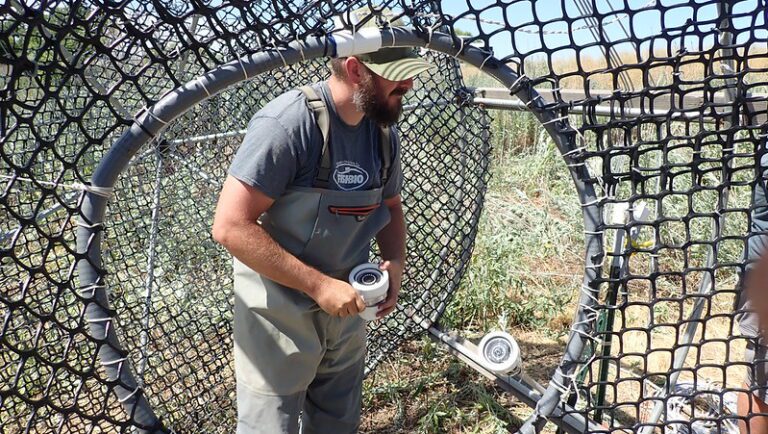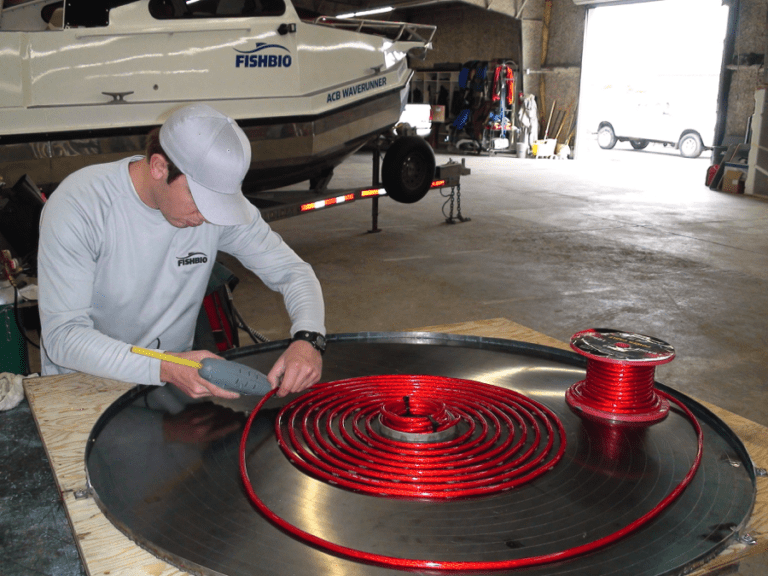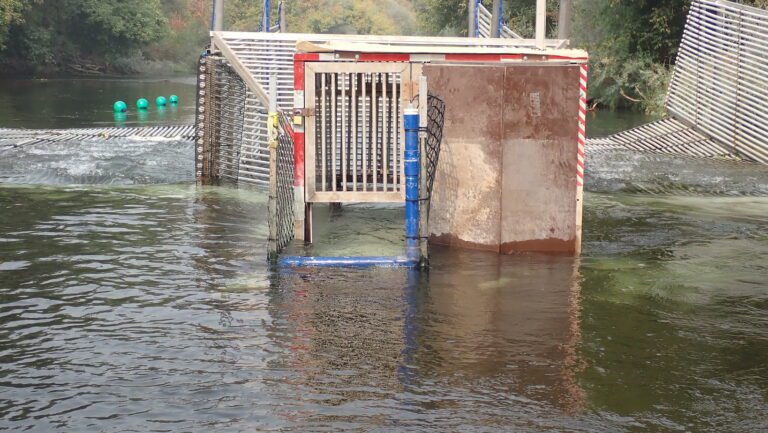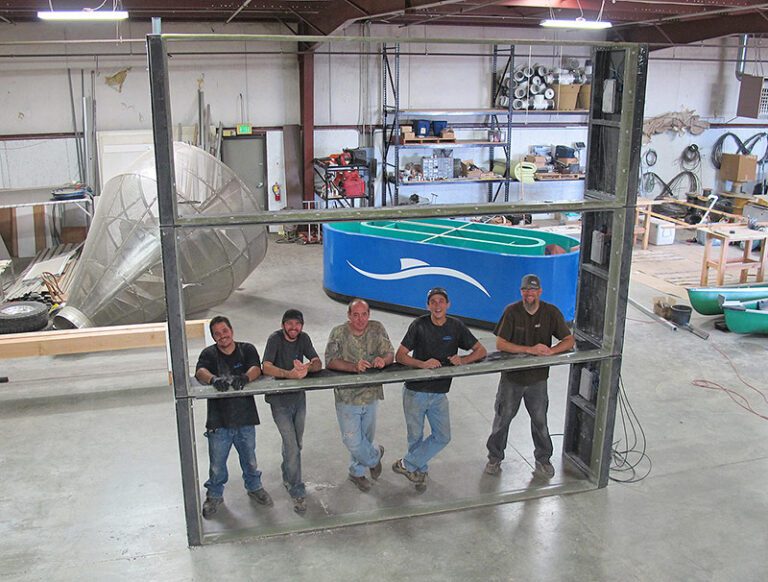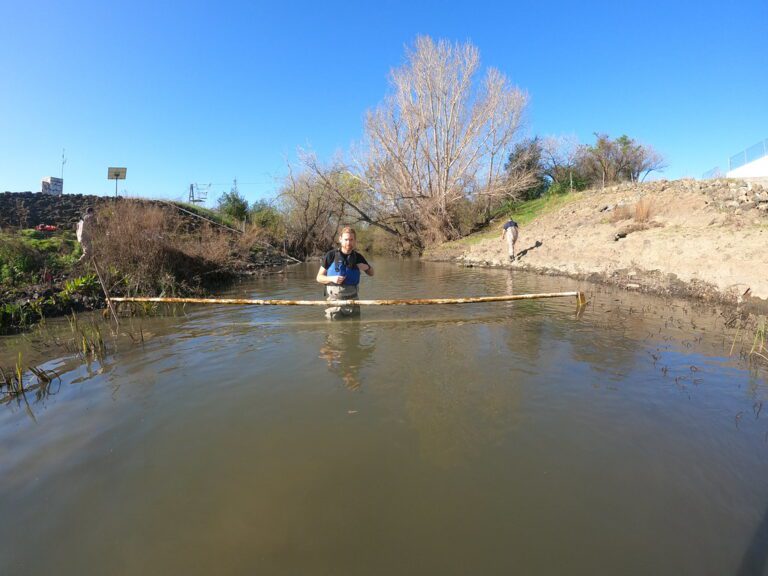A key component of Passive Integrated Transponder (PIT) tag technology is the antennas used to detect tagged fish in their environment. PIT tags do not actively send out a signal, but instead are activated and detected when they pass through the magnetic field of an antenna or scanner. Constructing PIT tag antennas presents an opportunity for innovation that FISHBIO has readily embraced. We have fabricated a number of unique antenna designs that have been installed everywhere from diversion tunnels and large rivers to fish counting weirs and fyke traps. These antennas have ranged in shape and size from towering stacked arrays measuring 12 feet tall, to flat coils that fit inside an aquarium tank. Our staff are experienced in designing, installing, and troubleshooting PIT tag antennas in a diversity of locations, as well as constructing solar power systems to run antennas in remote locations. Our antennas typically consist of electrical wire embedded within polyvinyl chloride (PVC) or fiberglass frames.
The two varieties of PIT technology are known as full-duplex (FDX) and half-duplex (HDX), and each offers unique advantages and disadvantages. FDX antennas continuously transmit an electromagnetic charge to detect PIT tags while simultaneously receiving information from nearby tags, and have rapid detection rates of up to 30 reads per second. In contrast, HDX antennas transmit a charge, then stop to “listen” for nearby tags before beginning the cycle again, meaning they have a slower detection rate of up to 14 reads per second. However, because tags designed for HDX systems contain a capacitor to momentarily store energy from the antenna, they are able to emit a stronger signal, and therefore can be detected from a greater distance than FDX tags. Given their more limited read range, FDX tags and antennas are more suitable for narrow passageways like fish ladders, whereas a HDX system is generally the better choice for larger antennas needed to cover a full stream channel. FISHBIO has experience in both FDX and HDX technology. Contact us to learn more about our capabilities to meet your project needs.
